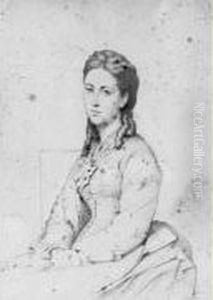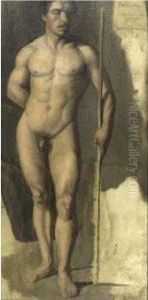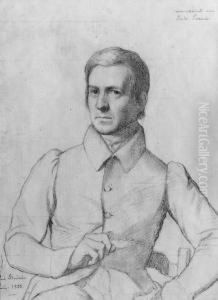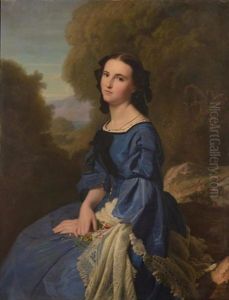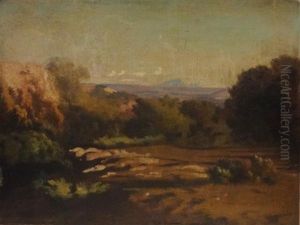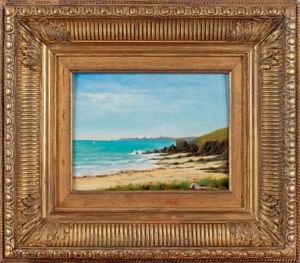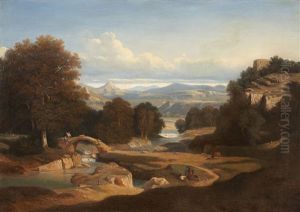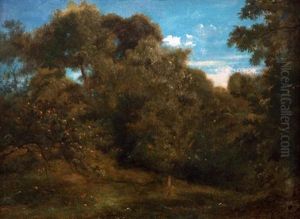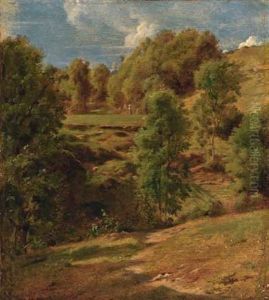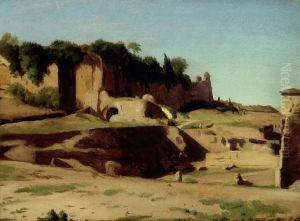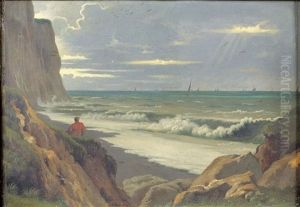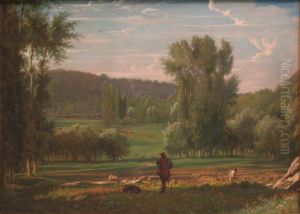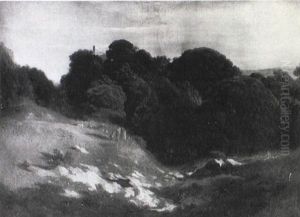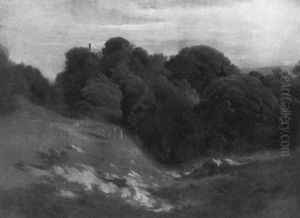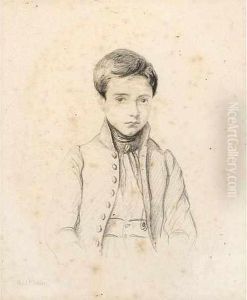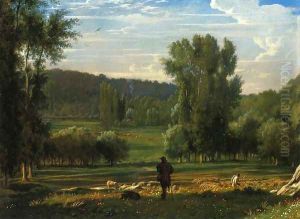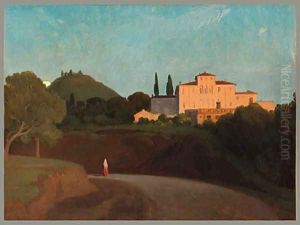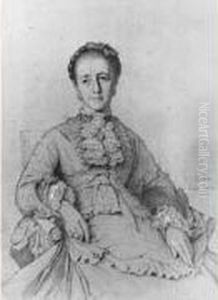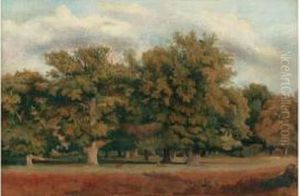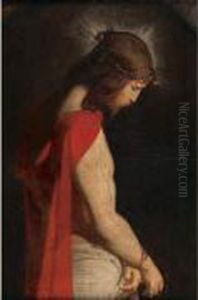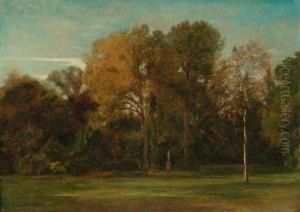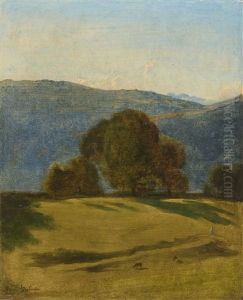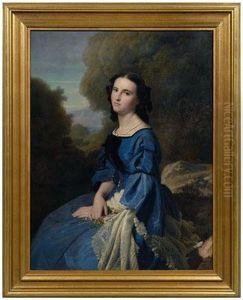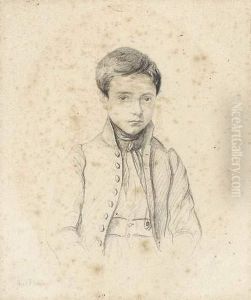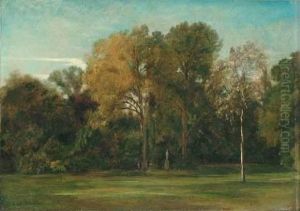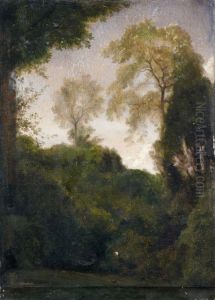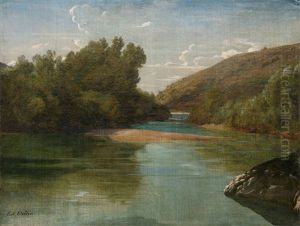Paul Flandrin Paintings
Paul Jean Flandrin, born on December 21, 1811, in Lyon, France, was a distinguished 19th-century French painter known for his landscape and religious paintings. He was the younger brother of the more famous Hippolyte Flandrin, a significant figure in the French academic painting tradition, and Auguste Flandrin. Raised in a family that appreciated the arts, Paul, along with his brothers, moved to Paris to study painting. They became students of Jean-Auguste-Dominique Ingres, one of the most prominent French painters of that era, whose influence was pivotal in shaping Paul's artistic direction.
Paul Flandrin's career, though overshadowed by his brother Hippolyte's success, was marked by a devotion to capturing the serene beauty of landscapes and a profound religious sentiment in his works. Unlike Hippolyte, who achieved great fame for his portraits and historical paintings, Paul focused on the tranquility of nature and religious themes, which resonated with the Romantic movement's ideals prevalent during his time. His works are characterized by a meticulous attention to detail, a subdued palette, and a sense of peacefulness that invites contemplation.
Throughout his life, Paul Flandrin struggled for recognition in the competitive art scene of 19th-century France, often living in the shadow of his brother's accomplishments. Despite this, he remained committed to his artistic vision, contributing to the landscape and religious painting genres with a quiet but persistent voice. His works were exhibited in the Salon, the official art exhibition of the Académie des Beaux-Arts in Paris, where he received moderate acclaim.
Paul Flandrin passed away on March 8, 1902, leaving behind a legacy that, while not as celebrated as that of his brother Hippolyte, is appreciated for its contribution to the landscape and religious art of the 19th century. Today, his paintings are held in various art collections and museums, serving as a testament to his dedication and love for the natural and spiritual worlds he sought to represent. His work continues to be studied by art historians and enjoyed by art lovers, offering a glimpse into the serene and devout aspects of the 19th-century French art scene.

